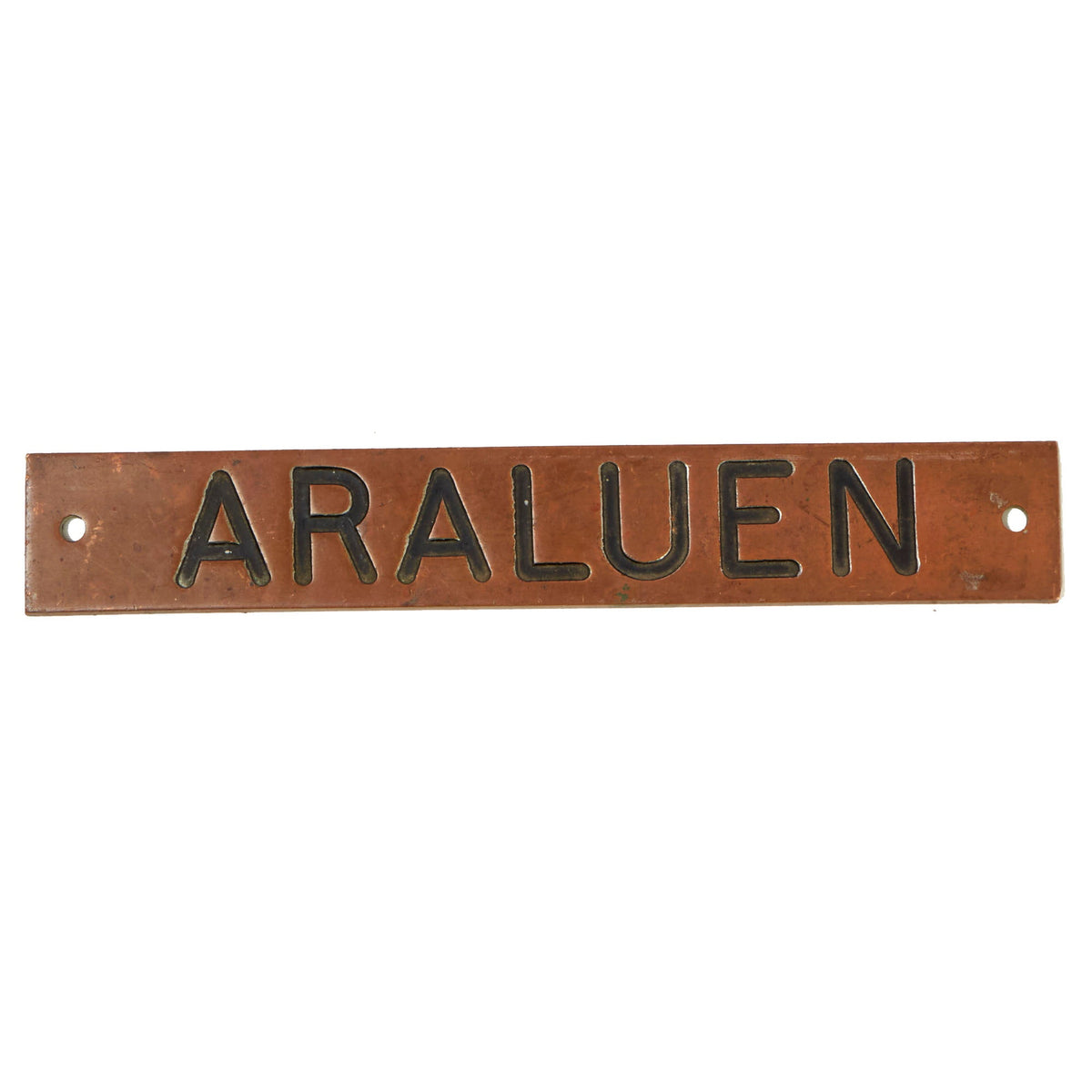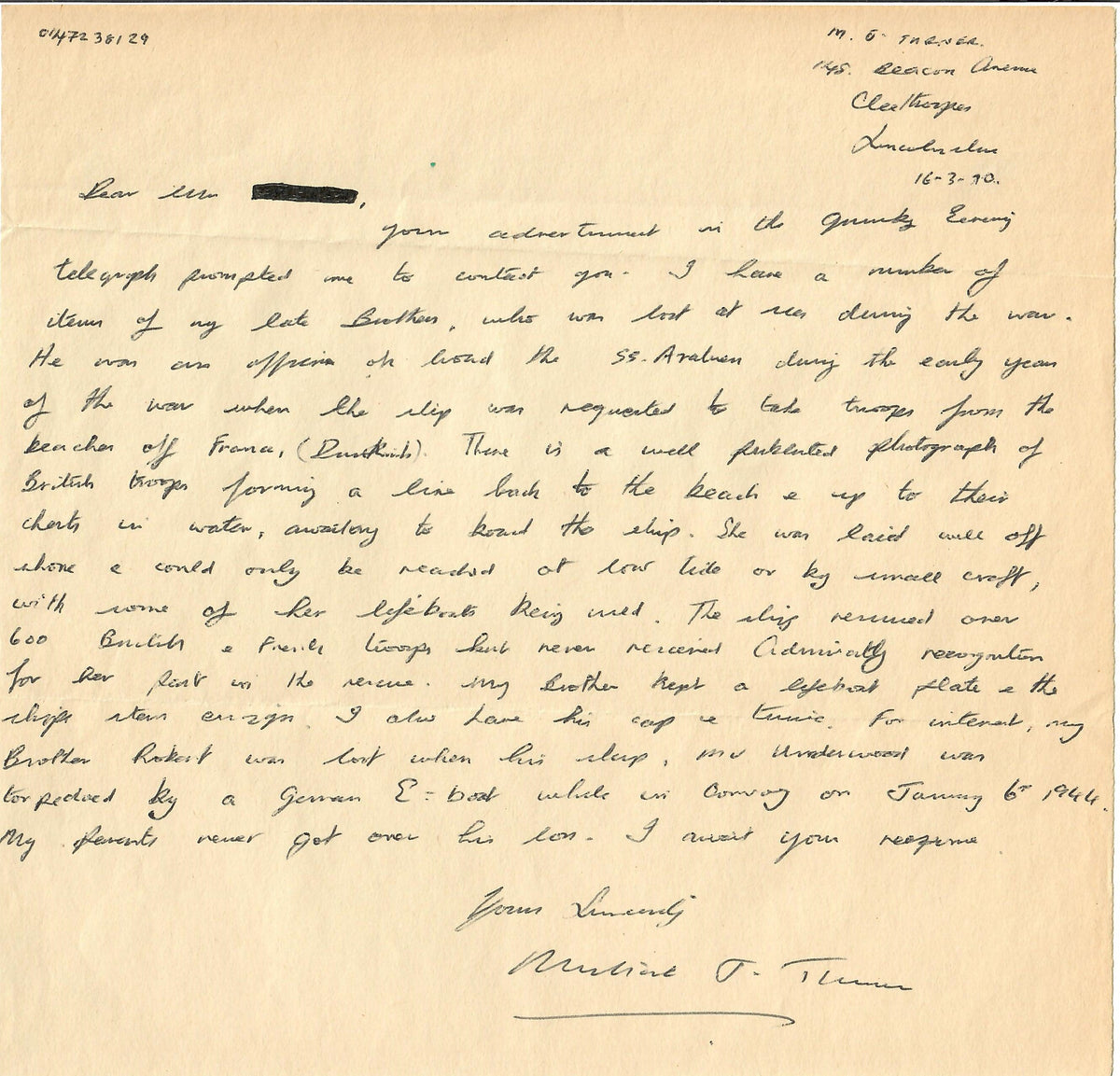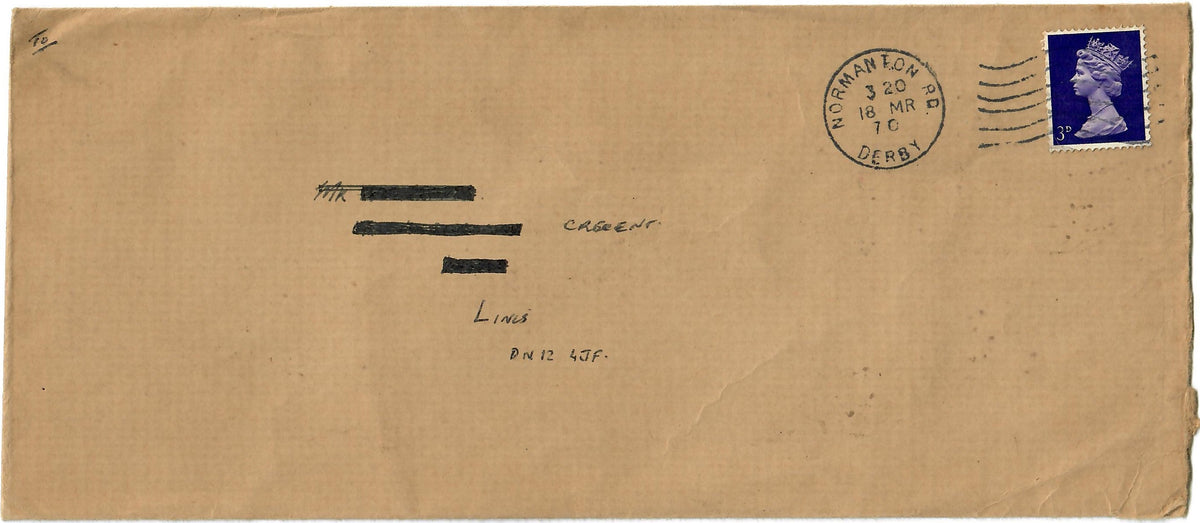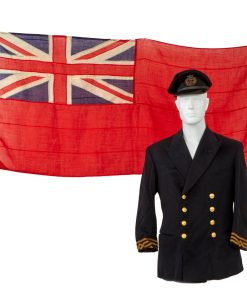Original British WWII Dunkirk Evacuation Red Ensign Stern Flag and Uniform Grouping For Robert Turner, Chief Officer of the Merchant Vessel SS Araluen – With Letter of Provenance From Sister of Turner Original Items
$ 1.695,00 $ 423,75
Original Items: Only One Grouping Available. This is an excellent, rather rare grouping of items all attributed to the Chief Officer of the vessel SS Araluen, who was present for the evacuation of allied soldiers at Dunkirk. The grouping was previously sold by Bonhams with an estimated price of $,3,000 – $5,000 , you can see the original listing at this link.
The British Merchant Navy Red Ensign flag flown from the stern on board the freighter S.S Araluen on her trip to Dunkirk. The S.S. Araluen was a British freighter in the Merchant Navy, and was requisitioned for the rescue operation, Operation Dynamo, but due to the shallow waters had to stand off the beach at Dunkirk. according to Marjorie Turner, Chief Officer Robert Turner’s sister, The famous photograph of the soldiers wading in line some 100’s of yards offshore waiting to be picked up, is taken from the side of the SS Araluen. This is one of the classic images of the Dunkirk operation. However, it should be noted that the Imperial War Museum credits this ship in the photo as a “destroyer” which is interesting as the ships railing and life boat hoists do not match for a British destroyer of that time and look decidedly like a commercial ship.
An interesting grouping collected by Chief Officer Robert Turner on the Araluen during Operation Dynamo including:
-The British woolen Red Ensign that flew from the stern of the Andar is 33 x 71 inches, with the Union Jack at upper left canton, with a red ground. This is the civilian flag to be flown by British Merchant marine ships. Hoist stenciled “2 RED ENSIGN.“
-Chief Officer Robert Turner’s jacket with 8 brass buttons, and 3 gold braid stripes at each cuff: together with his cap with the Merchant Marine insignia.
-The metal name plate, bearing the name “Araluen” from one of the lifeboats. 1×7 inches.
-A letter from Marjorie Turner, Robert’s sister, to a collector dated March 16h 1970, describing how the Araluen rescued over 600 British and French troops from the Dunkirk beaches “but never received Admiralty recognition of her part in the rescue.” She earlier noted that her brother “was an officer on board the SS Araluen when the ship was requested to take troops from the beaches off France (Dunkirk). There is a well published photograph of British troops forming a line back to the beach and up to their shirts in water, awaiting to board the ship… My brother kept a lifeboat plate & the ship’s stern ensign. I also have bis cap and tunic. For interest my brother Robert was lost when bis ship, MV Underwood was torpedoed by a German E-boat while in convoy on January 6, 1944.”; this is paired together with a copy of that classic photograph and a Press clipping.
Provenance: Chief Officer Robert Turner: Inherited by his sister Marjorie Turner: Sold to a British Collector 1970; War Museum.
The Dunkirk evacuation, codenamed Operation Dynamo and also known as the Miracle of Dunkirk, was the evacuation of the British Expeditionary Force (BEF) and other Allied troops from the French seaport of Dunkirk (Dunkerque) to England. Naval vessels and hundreds of civilian boats were used in the evacuation, which began on May 26th When it ended on June 4, about 198,000 British and 140,000 French and Belgian troops had been saved.
Chief Officer Robert George Turner also served on the MV Underwood, a 1900-ton cargo ship built by Henry Robb Ltd at Leith in 1941. She was owned by the Ministry of War Transport and was 262 long, 43′ beam & 19′ draught. 2 screws powered by 250 hp 8-cyl. diesel. On January 6, 1944 she was on passage from the Clyde for Portsmouth with government/military stores, including vehicles when she sank after a torpedo attack by German E-boat while in convoy, 15 crew and 3 passengers were lost. Chief Officer Robert Turner was lost with his ship at the age of 30 years old. She was identified in 1975 by information on the propeller boss.
There is no known confirmed information nor pictures of the British ship S.S. Araluen, but she was likely similar in size to the MV Underwood.
A fantastic grouping ready for further research and display.
The Dunkirk evacuation, codenamed Operation Dynamo and also known as the Miracle of Dunkirk, or just Dunkirk, was the evacuation of more than 338,000 Allied soldiers during the Second World War from the beaches and harbor of Dunkirk, in the north of France, between 26 May and 4 June 1940. The operation commenced after large numbers of Belgian, British, and French troops were cut off and surrounded by German troops during the six-week Battle of France. In a speech to the House of Commons, British Prime Minister Winston Churchill called this “a colossal military disaster”, saying “the whole root and core and brain of the British Army” had been stranded at Dunkirk and seemed about to perish or be captured. In his “We shall fight on the beaches” speech on 4 June, he hailed their rescue as a “miracle of deliverance”.
After Germany invaded Poland in September 1939, France and the British Empire declared war on Germany and imposed an economic blockade. The British Expeditionary Force (BEF) was sent to help defend France. After the Phoney War of October 1939 to April 1940, Germany invaded Belgium, the Netherlands, and France on 10 May 1940. Three panzer corps attacked through the Ardennes and drove northwest to the English Channel. By 21 May, German forces had trapped the BEF, the remains of the Belgian forces, and three French field armies along the northern coast of France. BEF commander General Viscount Gort immediately saw evacuation across the Channel as the best course of action, and began planning a withdrawal to Dunkirk, the closest good port.
Late on 23 May, a halt order was issued by Generaloberst Gerd von Rundstedt, commander of Army Group A. Adolf H approved this order the next day, and had the German High Command send confirmation to the front. Attacking the trapped BEF, French, and Belgian armies was left to the Luftwaffe until the order was rescinded on 26 May. This gave Allied forces time to construct defensive works and pull back large numbers of troops to fight the Battle of Dunkirk. From 28 to 31 May, in the siege of Lille, the remaining 40,000 men of the French First Army fought a delaying action against seven German divisions, including three armoured divisions.
On the first day, only 7,669 Allied soldiers were evacuated, but by the end of the eighth day, 338,226 had been rescued by a hastily assembled fleet of over 800 vessels. Many troops were able to embark from the harbour’s protective mole onto 39 British Royal Navy destroyers, four Royal Canadian Navy destroyers, at least three French Navy destroyers, and a variety of civilian merchant ships. Others had to wade out from the beaches, waiting for hours in shoulder-deep water. Some were ferried to the larger ships by what became known as the Little Ships of Dunkirk, a flotilla of hundreds of merchant marine boats, fishing boats, pleasure craft, yachts, and lifeboats called into service from Britain. The BEF lost 68,000 soldiers during the French campaign and had to abandon nearly all of its tanks, vehicles, and equipment. In his speech of 4 June, Churchill also reminded the country that “we must be very careful not to assign to this deliverance the attributes of a victory. Wars are not won by evacuations.”
Fast Shipping with Professional Packaging
Thanks to our longstanding association with UPS FedEx DHL, and other major international carriers, we are able to provide a range of shipping options. Our warehouse staff is expertly trained and will wrap your products according to our exact and precise specifications. Prior to shipping, your goods will be thoroughly examined and securely secured. We ship to thousands clients each day across multiple countries. This shows how we're dedicated to be the largest retailer on the internet. Warehouses and distribution centres can be located throughout Europe as well as the USA.
Note: Orders with more than one item will be assigned a processing date depending on the item.
Before shipping before shipping, we'll conduct a thorough inspection of the items you have ordered. Today, the majority of orders will be delivered within 48 hours. The delivery time will be between 3-7 days.
Returns
The stock is dynamic and we cannot completely manage it because multiple stakeholders are involved, including our factory and warehouse. So the actual stock may alter at any time. It's possible that you may not receive your order once the order has been made.
Our policy is valid for a period of 30 days. If you don't receive the product within 30 days, we are not able to issue a refund or an exchange.
You can only return an item if it is unused and in the same state as the day you received it. You must have the item in its original packaging.
Related products
Uncategorized
Australian WWII Owen MK1 Machine Carbine SMG Custom Fabricated Replica with Sling Original Items
Uncategorized
Uncategorized
Armoured Fighting Vehicles of the World: AFVs of World War One (Hardcover Book) New Made Items
Uncategorized
Uncategorized
Angolan Rebel 1970s era 60mm Inert Display Mortar from Angolan Civil War Original Items
Uncategorized
Uncategorized
Uncategorized
Uncategorized
Uncategorized
Uncategorized
Uncategorized
Uncategorized
Uncategorized
Uncategorized
Uncategorized
Uncategorized
Uncategorized
Uncategorized












































































